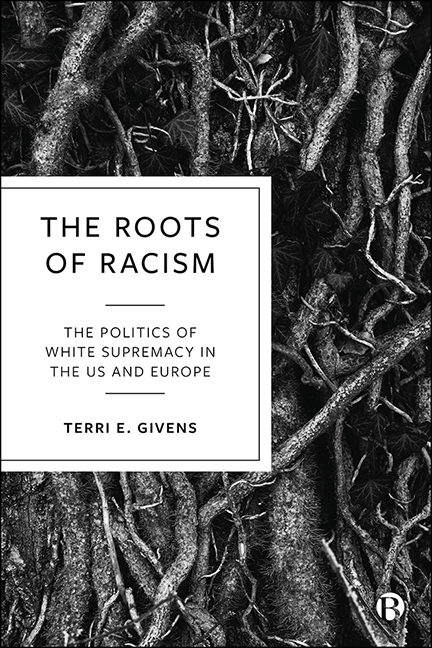Book contents
- Frontmatter
- Dedication
- Contents
- Preface
- 1 Introduction: Structural Racism is the Problem of the 21st Century
- 2 Political Science, International Relations, and the Normalization of White Supremacy
- 3 The Social and Geographical Construction of Race: A Transatlantic History
- 4 Ties that Bind: Slavery and Colonialism
- 5 Post-War Transitions: The Conflation of Immigration and Race
- 6 Immigration, Race, and Citizenship
- 7 From the Civil Rights Movement to Black Lives Matter
- 8 Party Politics, the Radical Right, and Race in the 21st Century
- 9 Elections, Protest, and Insurrection
- 10 Conclusion: Finding a Path Forward
- References
- Index
7 - From the Civil Rights Movement to Black Lives Matter
Published online by Cambridge University Press: 15 September 2022
- Frontmatter
- Dedication
- Contents
- Preface
- 1 Introduction: Structural Racism is the Problem of the 21st Century
- 2 Political Science, International Relations, and the Normalization of White Supremacy
- 3 The Social and Geographical Construction of Race: A Transatlantic History
- 4 Ties that Bind: Slavery and Colonialism
- 5 Post-War Transitions: The Conflation of Immigration and Race
- 6 Immigration, Race, and Citizenship
- 7 From the Civil Rights Movement to Black Lives Matter
- 8 Party Politics, the Radical Right, and Race in the 21st Century
- 9 Elections, Protest, and Insurrection
- 10 Conclusion: Finding a Path Forward
- References
- Index
Summary
From its founding, race and law have been integral components of state-and nation-building processes in the US. Slavery, in effect, transformed people into property, and elaborate rules governed the existence of Blacks, free and slave, in the North as well as the South. Even after the institution of slavery was destroyed by a bloody civil war, Whites continued to use law as a means of subjugating African Americans. As a result, an array of state and federal legal systems, often known by the euphemism “Jim Crow,” codified various racial distinctions, often limiting the capacity of African Americans to vote or to enter into contracts, the two fundamental elements of participation in a Lockean democracy. In addition, under the common law, owners of property and capital essentially possessed a right to discriminate. They could thus refuse services, accommodations, and employment to individuals on any grounds. This right gave Whites, particularly White men, considerable non-state power to shape communities.
Citizenship, civil rights, and voting rights are closely intertwined. In the US civil rights leaders fought for the right to vote after voter suppression laws made voting nearly impossible for Blacks in the American South. Ethnic and racial minorities face similar challenges relating to discrimination on both sides of the Atlantic, but they also have fought for their rights, learning from the various protests and civil rights movements. Although civil rights and human rights movements have been part of the political landscape from a transatlantic perspective since the founding of the League of Nations, policy developments were slow to develop until after World War II. The US took the lead with policy, followed by the UK. It would take action at the EU level for most European countries to focus on racial antidiscrimination policy.
In this chapter I begin with an examination of discrimination in practice in the US and Europe, particularly in terms of housing, labor rights, and cultural practices. I then examine the development of civil rights legislation in the US and its impact on policy and movements in the UK. In the 1990s, antidiscrimination policy shifted to the EU level, with the pursuit of antidiscrimination policy in the form of the Racial Equality Directive, and I conclude with a discussion of developments in political participation and representation for immigrants in Europe.
- Type
- Chapter
- Information
- The Roots of RacismThe Politics of White Supremacy in the US and Europe, pp. 89 - 101Publisher: Bristol University PressPrint publication year: 2022



